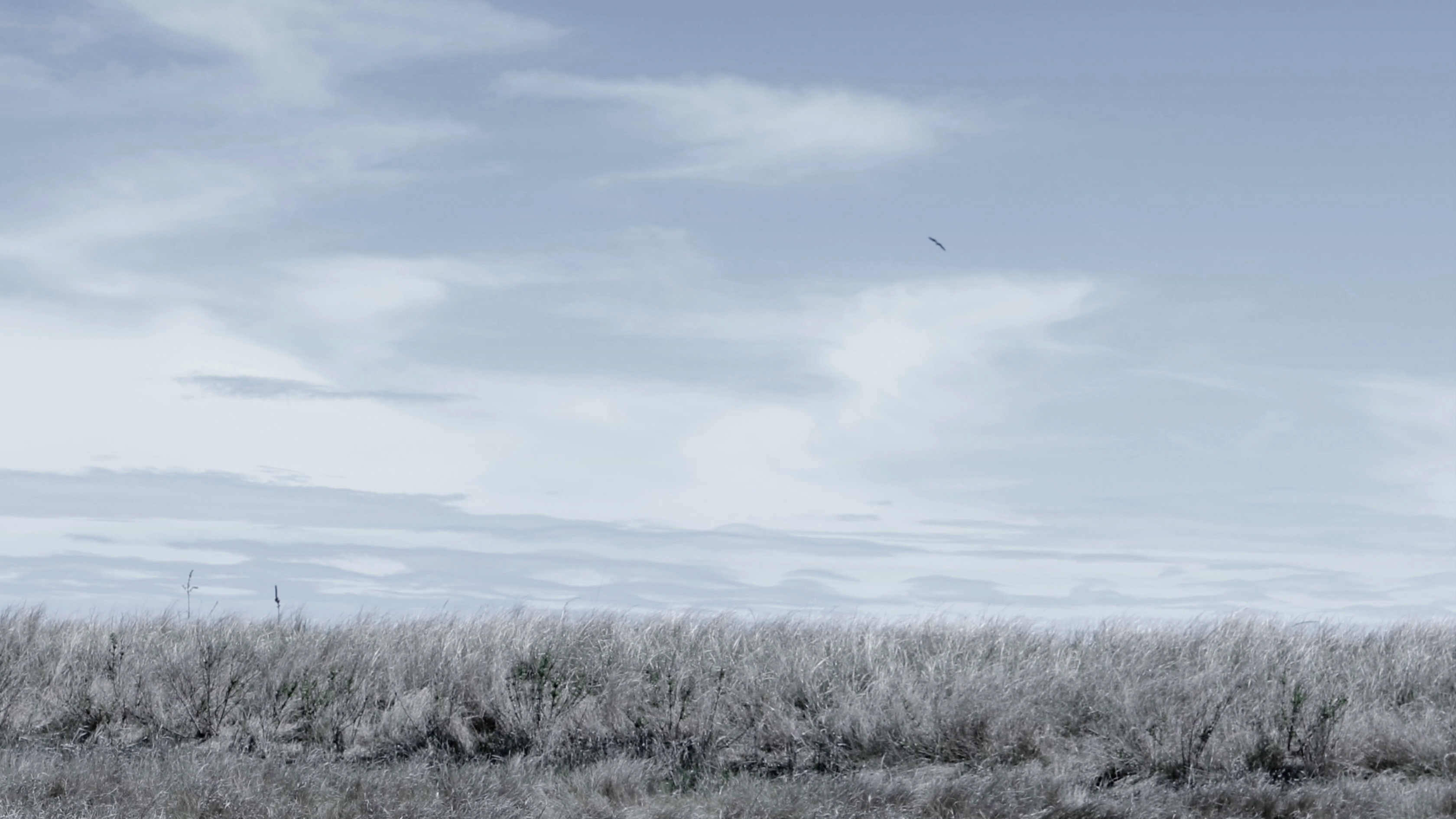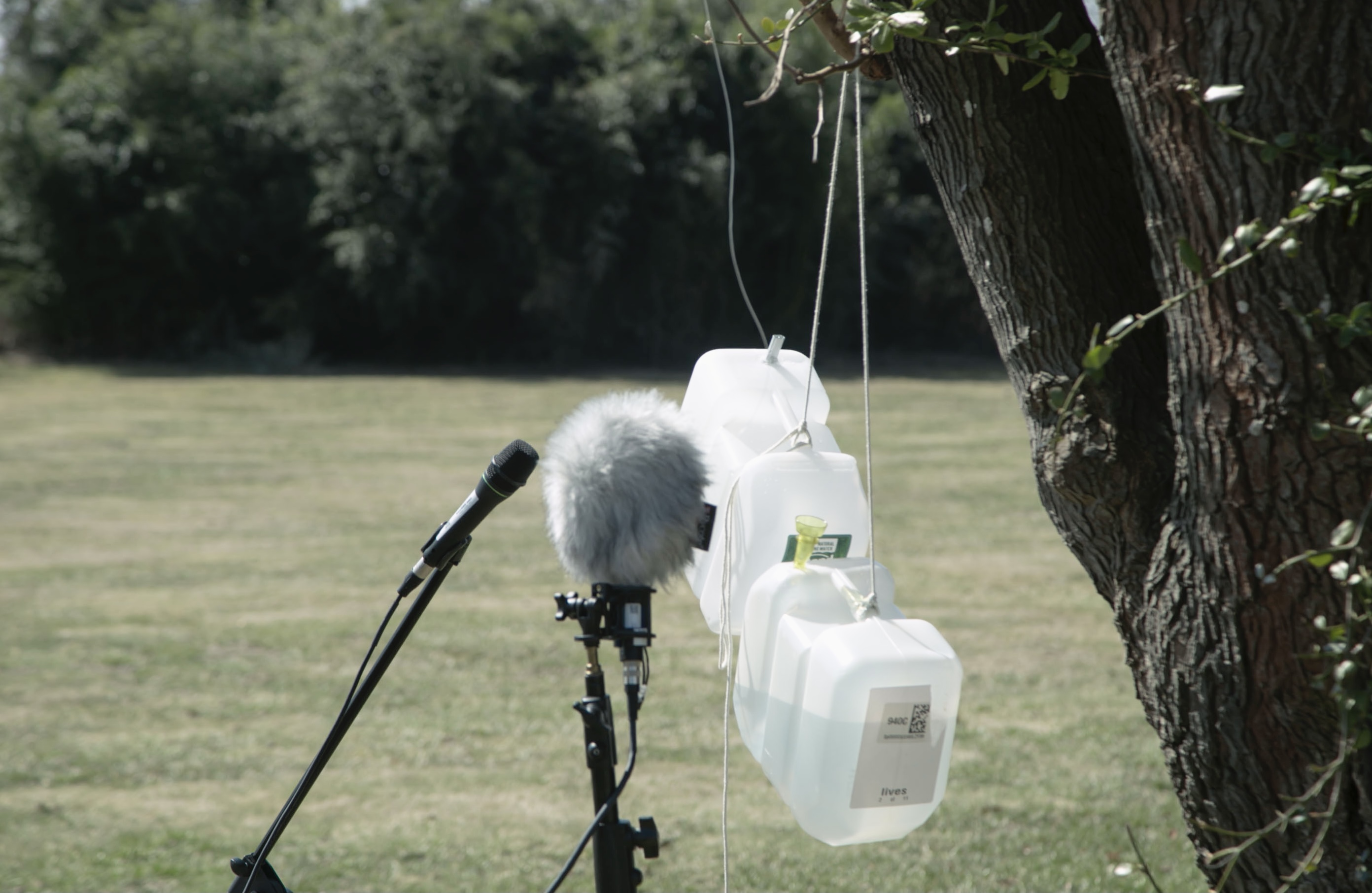2022
Calling
Site-specific sound installation. Ice. Variable size. The work is recorded as a 3'39 4K resolution video with audio.

When we consider the relationship between contemporary art and the natural world, we often find that they appear to be in conflict with each other. Artists often need to intervene in nature to create works, but these interventions are contrary to the spirit of nature itself. However, this series aims to explore a new realm that lies between nature and art, attempting to create works based on the potentiality of the natural world itself.
In this ambitious project, the artist sets out to explore a new dimension of site-specific installations that are a re-presentation of natural occurrences. While most installations are the result of human intervention, this series has the potential to occur naturally without any human involvement. By delving into the infinite possibilities of the past, present, and future, one can infer that every potential event will eventually happen within a long enough timeframe. Therefore, Therefore, these installations "could have" already existed in nature and "must have" if given enough time into the past or future. Thus, this project not only intervenes in the space it occupies, but also integrates a far-reaching space-time continuum or offers a glimpse into the future.



These natural occurrences, if left undiscovered in their original context, might merely represent the universe's absurdity and meaninglessness. However, viewed through the artist's perspective, these phenomena, perhaps overlooked by others, possess a potentiality of significance. They can trigger unforeseeable, Black Swan events that challenge our existing paradigms and alter our perception of the world. Overall, this exploration of the porous boundary between intervention and naturalness is a long-term goal for the artist.

Through the installation Calling, the artist has created a unique auditory experience that serves as an emotional bridge between the marshland and its avian inhabitants. Constructed entirely from ice, this tide-driven sound installation resembles an ice cap that has formed on a stone in a riverbank. And If this stone were to sink to the riverbed, just as the air surrounding the holes in the ice cap would be compressed or drawn in as the water flows.

The installation uses a series of ice caps of varying sizes scattered throughout the marsh to capture the movement of water and translate it into the sound of birds through specially designed airways. These bird-like sounds capture the various moods of the marsh throughout the day, from the vibrant energy of midday to the more subdued tones of dusk. Due to the nature of bird language, this rhythmic movement generated by water has an emotional resonance for birds as well. In the gradual melting of the installation, the bird-like sounds seamlessly transition into the natural breathing of the marsh itself, until the installation disappears entirely into the water.
Calling can be seen as a cup phone that connects us with the usually inaudible movement of water, and facilitates potential communication with non-human beings. By inviting us to hear the silenced voices of our planet, this installation challenges us to empathize with the non-human and non-living entities that share our world.
“The planet will never come alive for you unless your songs and stories give life to all the beings, seen and unseen, that inhabit a living Earth.”

This project and Exhibition was funded by Hyundai Motor Group
<Back